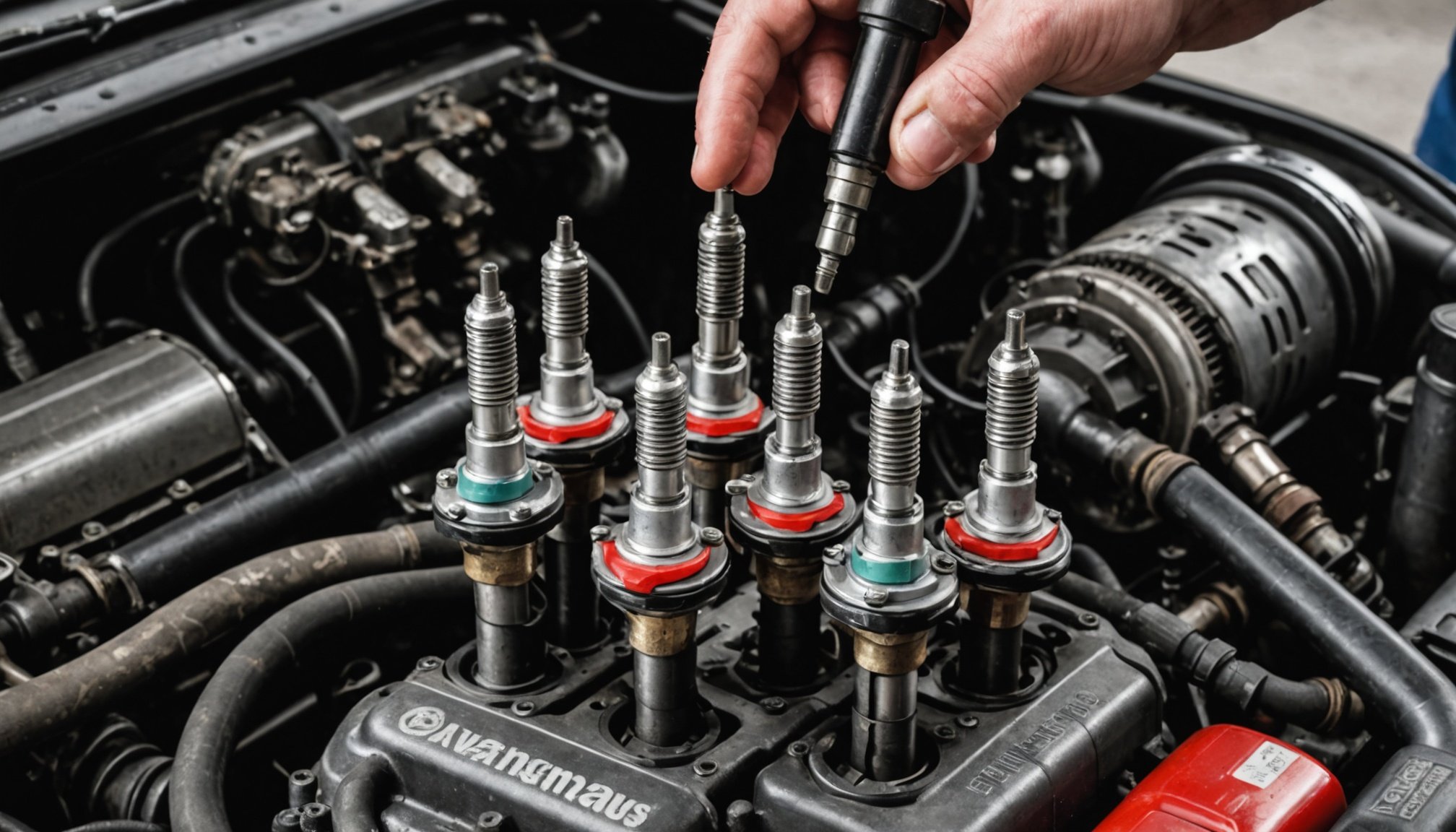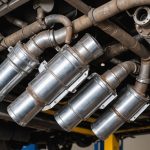Importance of Spark Plug Replacement in High-Performance Engines
In high-performance vehicles, spark plugs play a pivotal role in ensuring optimal engine performance. These small components are responsible for igniting the air-fuel mixture in the combustion chamber, a process crucial to engine efficiency. A well-functioning spark plug ensures complete combustion, leading to enhanced engine performance and fuel economy.
However, when spark plugs wear out or become faulty, they can significantly hinder engine performance. Misfires, poor fuel economy, and reduced power output are common symptoms of worn spark plugs. In high-performance engines, even slight inefficiencies can lead to noticeable decreases in power and responsiveness. Therefore, understanding the spark plug relevance in this context is imperative.
Also read : Transform Your British Sedan: A Comprehensive Guide to Installing a Panoramic Sunroof
Timely spark plug replacement is essential for maintaining the efficiency and performance of high-performance vehicles. Regular replacement prevents potential damage to other engine components, facilitating smoother operation and more consistent engine performance. Here are some benefits:
- Enhanced ignition reliability
- Improved engine performance optimization
- Prolonged engine life
Routine maintenance, including spark plug inspection and replacement, ensures that your high-performance engine remains at its peak, delivering the performance and thrill expected from such advanced machinery.
Topic to read : Mastering Radar Detectors: A Complete Guide to Setting Up and Calibrating for UK Motorways in Luxury Vehicles
Selecting the Right Spark Plugs for British Engines
Understanding the different spark plug types is essential when choosing the right one for British engines. The primary types include copper, platinum, and iridium. Copper plugs are cost-effective and offer good heat dissipation, but they have a shorter lifespan. Platinum and iridium plugs, on the other hand, provide greater durability and are more suited for high-performance scenarios.
Compatibility is crucial when selecting spark plugs. The heat range dictates how well a plug can handle the engine’s temperature, and the material of the electrode impacts both performance and longevity. Engines that run hotter require a plug with the appropriate heat range to prevent overheating and pre-ignition.
When exploring options for high-performance spark plugs, consider recommended brands like NGK, Bosch, and Denso, which are often mentioned for their reliability and capabilities. Models like the NGK Iridium IX or Bosch Platinum+2 are designed to support the demanding requirements of high-performance British engines.
In conclusion, selecting the right spark plug involves an understanding of both compatibility and specific engine requirements, ensuring both the efficient operation and longevity of your British engine.
Step-by-Step Guide to Spark Plug Replacement
Replacing spark plugs can significantly enhance your vehicle’s performance and fuel efficiency. Understanding the process can make it a straightforward DIY task.
Preparation and Tools Needed
Before starting the spark plug installation, gather all necessary tools and materials to ensure a smooth workflow. Essential tools include a spark plug socket, a ratchet with an extension, and a torque wrench. Additional helpful tools are a gapping tool and dielectric grease. Having all these prepared minimizes interruptions and complications. It’s crucial to set up a clean, well-lit workspace to avoid misplacing important components.
Removal of Old Spark Plugs
Carefully removing old spark plugs is vital. First, let the engine cool to avoid burns. Disconnect the spark plug wire by gently twisting and pulling straight out. Use a spark plug socket attached to a ratchet to loosen and remove the old spark plug. Take care to remove one plug at a time to prevent mixing up cables. Ensure debris doesn’t fall into the open cylinder.
Installation of New Spark Plugs
For installing new plugs, verify that each is gapped correctly using a gapping tool. Insert the new plug by hand to prevent cross-threading. Use a torque wrench to tighten each spark plug to the manufacturer’s specifications, ensuring optimal performance. Reconnect the spark plug wire, confirming a secure fit. This stepwise approach ensures your engine runs smoothly.
Maintenance Tips for Spark Plugs
Proper spark plug maintenance is crucial for ensuring the longevity and continuous performance improvement of your vehicle. It’s essential to follow best practices to keep your spark plugs in good condition.
One effective maintenance strategy is to regularly inspect your spark plugs for any signs of damage or wear, such as cracks or soot build-up. If any of these signs are present, it’s time to replace them to avoid performance decline. Keeping the spark plugs clean by removing any debris can also prolong their lifespan. Regularly check the electrode gap and ensure it aligns with the manufacturer’s specifications for optimal performance.
Signs that indicate the need for spark plug maintenance or replacement include poor fuel economy, misfiring, or difficulty starting the engine. Catching these symptoms early can help avoid more significant issues down the road.
Avoid common mistakes like over-tightening spark plugs during installation, which can damage the threads or cause breakage. Additionally, using incorrect spark plug types for your vehicle is another mistake that can severely affect performance.
By following these tips, you can ensure that your vehicle runs smoothly and efficiently, extending the lifespan and effectiveness of the spark plugs.
Troubleshooting Common Spark Plug Issues
Poor engine performance can often be traced to spark plug problems. Understanding the typical issues and diagnostics can help maintain a smooth ride. Common spark plug problems include fouling, wear, and carbon build-up. These challenges can lead to engine misfires, reduced fuel efficiency, and increased emissions.
So, how do you identify these issues? Diagnostic tips are crucial. Start by visually inspecting the spark plugs. Fouled plugs may appear dirty or oily. A worn spark plug often has a rounded tip or excessive gap. If you suspect engine misfires, check for erratic idling and poor acceleration—classic symptoms of spark plug troubles.
High-performance engines demand more from their components, including spark plugs. Solutions for these engines may involve using premium plugs that withstand greater stress. Regular maintenance and choosing the right spark plug type for your vehicle model can alleviate some problems. Replacing spark plugs at recommended intervals can prevent wear-related issues.
Understanding these elements ensures you diagnose and address issues effectively, keeping your engine running smoothly. Remember that well-maintained spark plugs are integral to maximizing your engine’s performance and longevity.
Enhancing Engine Performance Post-Replacement
When it comes to achieving engine performance improvement after replacing spark plugs, there are crucial steps that can optimize output. Start with an engine performance assessment to determine if additional measures are required. This can guide the necessary performance tuning procedures.
Steps for Peak Performance
Post spark plug replacement, prioritize an inspection of your ignition system. Check the spark plug wires and ensure that they are in excellent condition, as faulty wires can diminish power optimization. Regular cleaning of the throttle body can also significantly help in maintaining an optimal air-fuel mix.
Engine Tuning and Adjustments
Engine tuning post-replacement is critical for maintaining peak performance. Adjust the ignition timing to suit the new spark plugs, which can influence combustion efficiency directly. A well-timed engine runs smoother and delivers noticeable power benefits.
Recommendations for Further Modifications
For further enhancements, consider additional modifications. Upgrading your air intake system promotes better air flow, which can boost overall power. Similarly, high-performance air filters contribute to better combustion by providing cleaner air. Regularly monitor and fine-tune these elements to sustain long-term engine efficiency.











